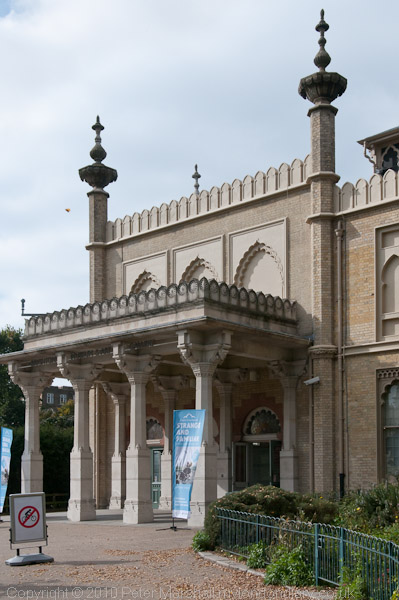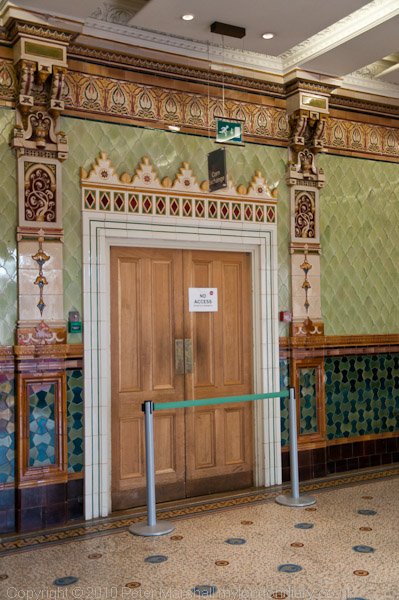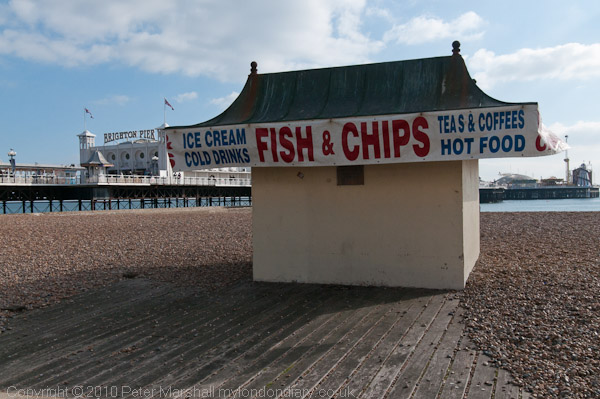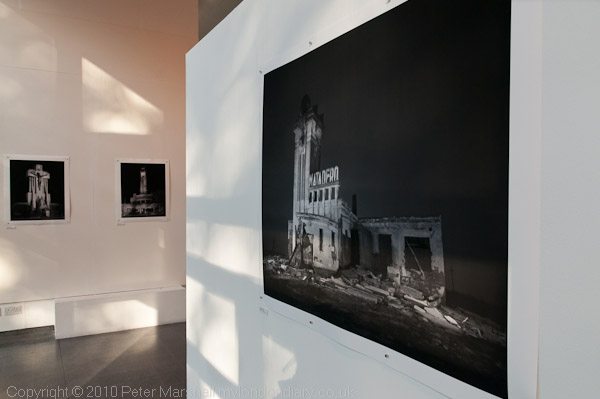Unfortunately I was only able to visit the Brighton Photo Biennial (which continues until the 14th November 2010) on a Tuesday, when some of the possibly more interesting venues were closed. Perhaps I’ll manage to get back to see them but it isn’t easy for me to find another day to visit Brighton and see more work in both in the Biennial and the Photo Fringe. But if you are thinking of going, this is a festival that – if you want to be able to see almost everything – is only fully open on Fridays and Saturdays.

The Brighton Museum where the headline show ‘Strange & Familiar‘ was taking place is well worth a visit, although perhaps more for the building and the permanent collection than the photography on show. Commissioning new work is always a gamble, and here I think the dice have rolled to give Brighton an near minimum score. Of course, having given commissions, the commissioning body is more or less obliged not only to show the work but to praise it inordinately whatever. But I found it hard to believe in emperor Parr’s new clothes.

I’ve already written about Alec Soth‘s problem on entering the country (in UK Customs) and my thoughts on that; the images on show have some interest as the work of a seven year old with a certain fairly large amount of parental direction, but frankly not very a great deal. I think her drawings are better than her photography. For those of us who on first hearing about the commission had been looking forward to seeing Soth’s take on the city I think this is – to view it generously – a rather poor third-best.
If you like rather wacky ideas you may like Stephen Gill’s ‘Outside In‘ but I found seeing more than one or two images made with rubbish picked from the streets of Brighton in the camera (including cut up bits of transparencies he took for the purpose) tedious. Actually I do tend to appreciate the weirdly unusual, but my first impression that it was an amusing idea was soon undermined by asking the question “But does it work?” and finding myself giving a fairly negative answer at various levels, and found myself wondering if that old computing acronym, GIGO, might have been a better title.
I think it is partly a matter of scale and it does for me work considerably better in some of the smaller prints on display than on any of the rather large ones, perhaps because the collected detritus in the camera (and in a large display case) is closer to actual size. And in the Blurb book which I’ve just seen rather small on line, I really begin to warm to them considerably more. His video chat with Martin Parr did have me laughing at times, though for all the wrong reasons. In the interview Gill talks about feeling restricted by straight photography; perhaps why I don’t appreciate his work here is that I’ve always and still feel empowered by it.
But there was I think a second problem that lay behind this and to some extent all three of these shows; the pursuit of novelty for its own sake and a determination to avoid the stereotypes of Brighton at any and all costs. Gill’s work seemed curiously dislocated from the city despite being based around objects from it, and I think would have been considerably stronger had this not been so.

A Brighton stereoype
Of these three major commissions I felt only half of one of them, the ‘Murmuration‘ of starlings around Brighton Pier in the winter dusk by Rinko Kawauchi was really at all successful. It’s perhaps a pity that she returned in Spring to do more work, which I think largely fails. Her pictures (like the others) were shown as large unframed inkjet prints pinned to the walls, and they had become somewhat buckled. This was a shame as I found it detracted particularly from those large images of the flocks of birds in flight.
I think I would probably have found both New Ways of Looking and Queer Brighton considerably more to my taste but unfortunately both galleries were closed. Should you want to see all four shows in a single day you need to go either on a Friday or a Saturday between 11 am and 5pm.
The only other major show in the Biennial I could see was ‘A Night in Argentina‘ with work by Alejandro Chaskielberg and Esteban Pastorino Diaz, in the University of Brighton Building on Grand Parade.

Both sets of pictures were impressive, though in quite different ways. With Diaz, my main interest was in the incredible architecture of Francisco Salamone, which was however splendidly brought out by the photographer. I couldn’t understand why the programme leaflet labelled this an experimental strategy – how does it differ from the many other photographs of buildings using long exposures at night, certainly since the early years of the dry plate process, if not before? Or was there something I missed? But they were fine images. Perhaps the ‘experimental’ label referred to the fact that he usually prints by the gum bichromate process (which dates from the same era around 1900) but of course there are many other photographers using that – including my old friend Terry King who started using the process around 1980 (with a tiny bit of help from me) and has since taught it to hundreds if not thousands of mainly British photographers – part of a worldwide awakening of interest in ‘alternative processes’ over the past 30 years. But the large prints on show were fairly ordinary inkjet prints, perhaps just a little lacking in the delicacy that the best of these can now achieve.
Chaskielberg‘s work (see the BJP video) is without doubt experimental although others have previously worked with lengthy exposures and the full moon to give results with a distorted colour palette. I find his pictures ugly and brash but also fascinating. He adds light while taking them by using a flash, and using a 4×5 camera appears in some cases to being doing some interesting things with lens tilt, though honestly I could be sure about little. But whether it “open up new ways of representing the world” or “effectively refreshes our photographic vocabulary” I have grave doubts. For me this work was not representing the world, but about creating fictions about it.
More about Brighton in Brighton Photo Fringe